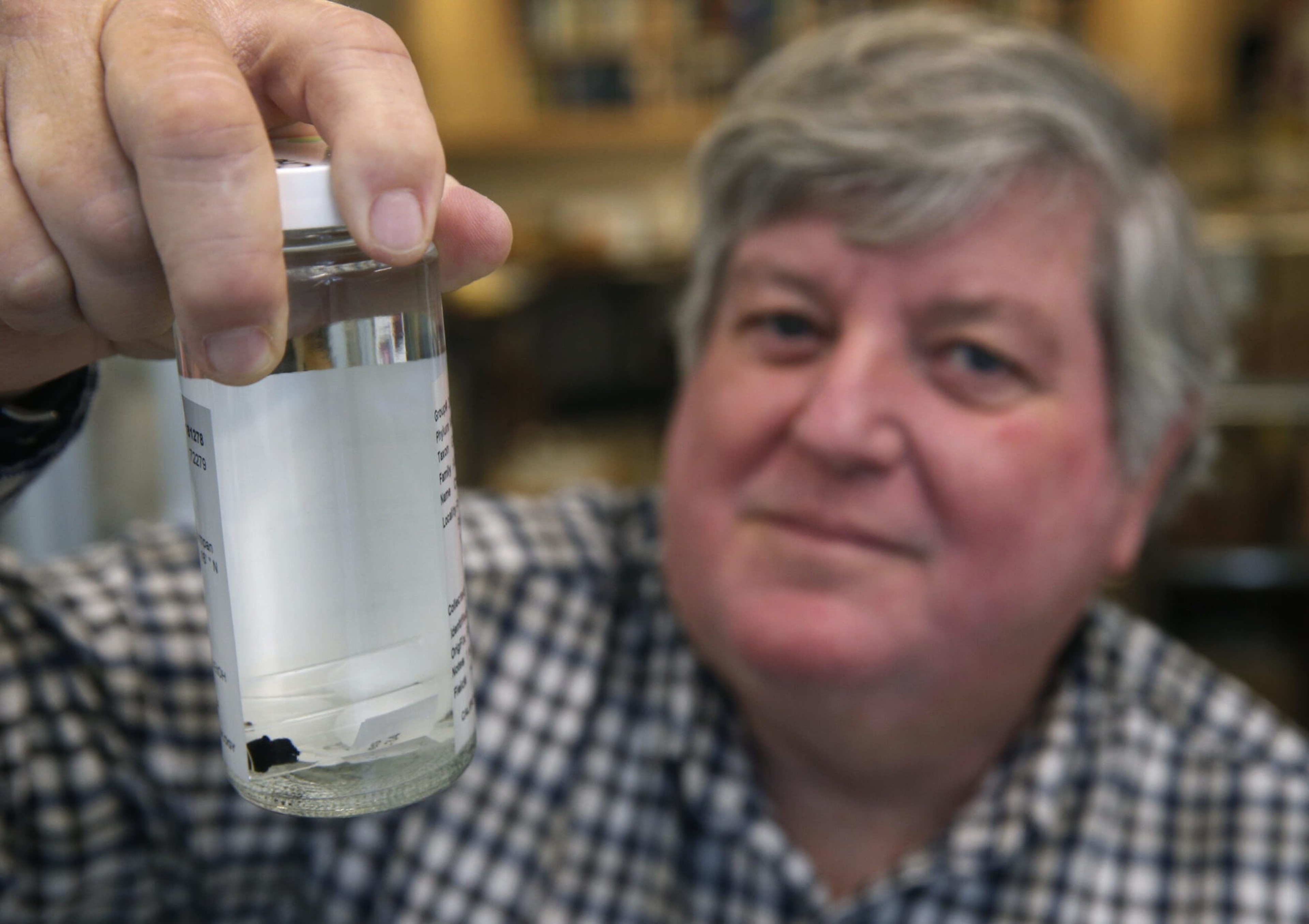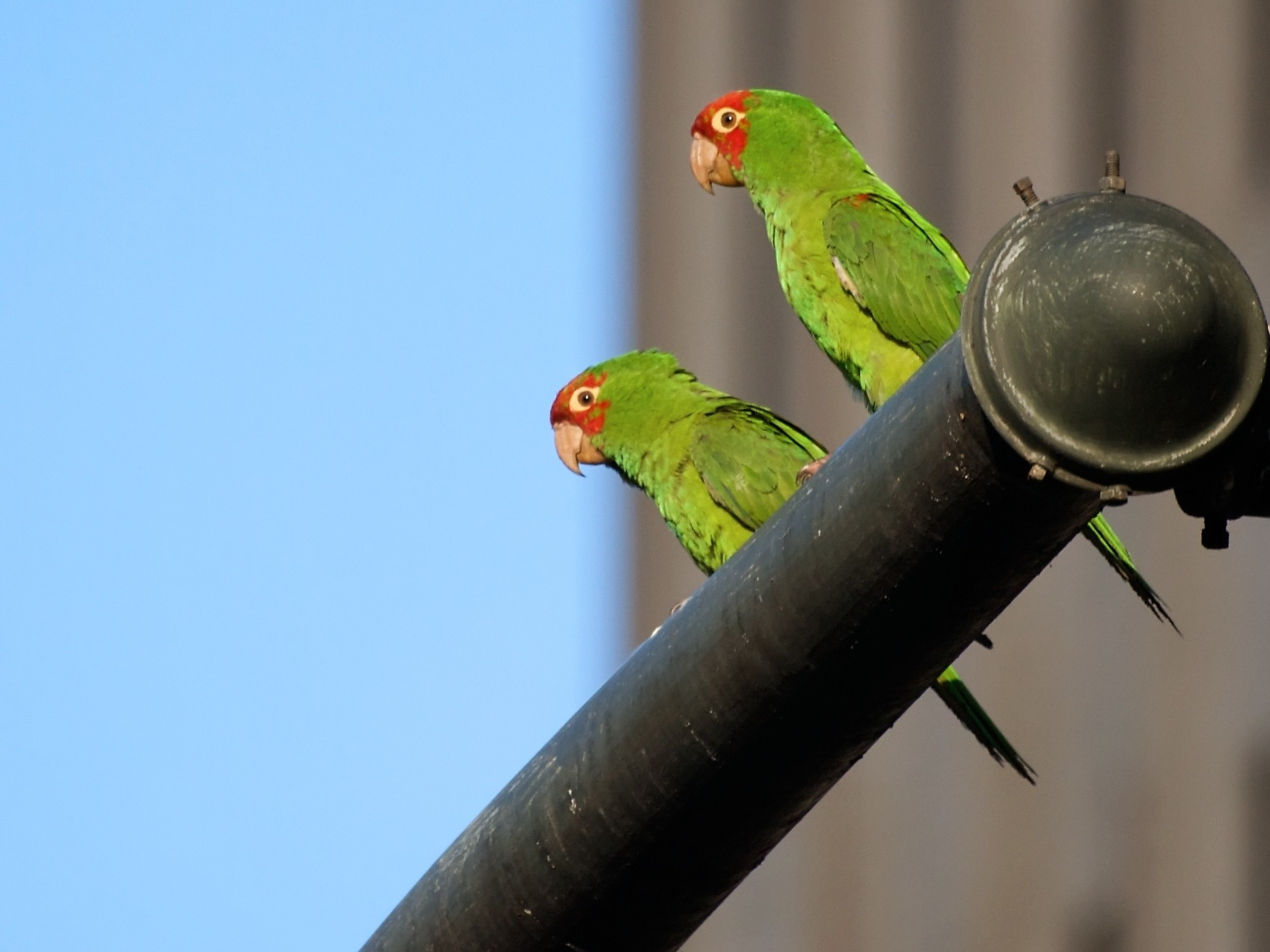From barnacles suctioned to the bottom of cargo ships to pollen carried on an unsuspecting hiker’s boots, invasive and non-native species have long plagued California’s famously diverse environment. Unknowingly—and sometimes intentionall—dragged in from regions across the world, these plants, bugs and animals can cause immense ecological and financial harm if left unchecked.
California and the Bay Area are particularly hard-hit by invasive creepy-crawlies and weeds. Some scientists estimated the state spent upward of $82 million annually on invasive species conservation efforts in the early 2000s, and a 2008 report showed that the San Francisco Bay—one of the top 25 biodiversity hotspots (opens in new tab) on the planet—was once the “most invaded aquatic region on Earth. (opens in new tab)”
In more recent years, the spread of non-native, invasive species has damaged the biodiversity of many California regions, and climate change has only exacerbated (opens in new tab) the issue. Tech-heavy San Francisco’s position as a hub for international business, trade and travel also makes it especially vulnerable (opens in new tab) to invasive species from far-off regions.
“Our primary concern is loss of habitat for native biodiversity,” wrote Doug Johnson and Jutta Burger, directors at the California Invasive Plant Council. “With the effects of human disturbance and climate change becoming increasingly obvious, conservationists see invasive species threats to habitat and native biodiversity on protected lands as one factor that we actually can do something about.”
To bring awareness to the issue, this week is National Invasive Species Awareness Week (opens in new tab) according to the U.S. Department of the Interior. Here’s a list of Northern California’s wackiest and most damaging non-native plants and animals, both past and present.
Feral Hogs
The San Francisco Bay Area is no stranger to wild animals roaming its parks and streets, and locals have raised serious concerns about the “feral swine bomb (opens in new tab)” that has swept through Northern California regions in the past three years.
In 2022, the New York Times reported that these gnarly porkers were disturbing harvests in Napa, ripping up golf courses, contaminating water and simply wreaking havoc on East Bay properties (opens in new tab). The damage they wrought was so bad in Lafayette, that the city hired an official pig hunter (opens in new tab).
Feral hogs were apparently widespread in San Francisco’s Golden Gate Park (opens in new tab) in the 1980s, but the National Park Service says they appear to have been eradicated—in the city, at least—by trapping efforts.

Jumping Worms
Self-reproducing, thrashing, writhing and capable of jumping a foot in the air, jumping worms made their way to California in 2022 (opens in new tab). Posing a “significant threat” to the state’s ecosystem, these worms are native to Japan and the Korean Peninsula and have spread from the East Coast to Napa Valley.
Also known as the crazy worm, wood eel, wigglers or Alabama jumper, these animals are “active, aggressive and have voracious appetites (opens in new tab),” according to the California Department of Food and Agriculture. These hungry worms clear forest floors of plants and debris, encouraging erosion and leaving “taco meat”-like dry worm casings (opens in new tab) in their wake. Yum.
Carnivorous Sea Slugs
Called nudibranchs, sea slugs are somewhat common (opens in new tab) in the SF Bay Area. But numerous non-native species have found their way from New Zealand and Asia into the Bay, likely carried in the ballasts of ships or freighter tanks that float through California harbors.
They’re invasive, but they’re really pretty (opens in new tab)—nudibranchs often take on the color of their prey and can be as rainbow-hued as a butterfly. Nudibranchs are also carnivorous (opens in new tab), preying on sponges, barnacles, anemones and even their own eggs. An amateur naturalist recorded the first sighting (opens in new tab) of an invasive Asian carnivorous sea slug in San Francisco in 2016, and a bloom of colorful southern sea slugs slowly slithered (opens in new tab) into the Bay in 2015, due to warming ocean waters.

Eucalyptus
The iconic Bay Area tree, the Tasmanian blue gum eucalyptus, is actually non-native to California. Though they thrive in Northern California’s Mediterranean climate, they are native to Australia and were brought to the Bay in the 1850s (opens in new tab) during the Gold Rush. By the 1900s, thousands of acres of eucalyptus were planted at the instruction of the state government.
Though beautiful—and fragrant—conservationists are divided (opens in new tab) on whether they are harmful or helpful to local ecosystems. Fire is also a problem, due to the tree’s highly flammable flaky bark.
Brown-Headed Cowbird

The National Park Service says that these common birds are widespread (opens in new tab) in Golden Gate Park and the Presidio, so much so that controlling their spread is unrealistic. Notorious for “nest parasitism,” they like to sneak into other birds’ nests where they’ll lay and abandon their eggs, displacing other birds’ babies and effectively fostering their own offspring.
These nest-robbers are basically ubiquitous throughout California, and sightings of the birds in Northern California date back to the 1800s (opens in new tab).
READ MORE: Bird Flu Outbreak Forces SF Pigeon Activists To Halt Efforts To Heal Their Feathered Friends
Eastern Gray and Fox Squirrels
Certain squirrels are native to California, but the story of how two non-native species came to the Bay is a peculiar case of Victorian quirkiness: Early California settlers apparently introduced eastern grays to Golden Gate Park because the native western grays were too shy and disliked humans (opens in new tab)—the settlers wanted more chances to see these furry creatures in local parks.
Yet, conservationists caution that these squirrels outcompete their shy squirrelly counterparts and reproduce quicker and in bigger numbers.

Wild Parrots
The wild parrots of San Francisco might be the most famous—and controversial—of this list. In 2020, one local newspaper reported that there could be as many as 400 of these cherry-headed conures (opens in new tab) flying throughout the city.
Their origin is a mystery, though some local history buffs say (opens in new tab) there are stories of parrots on Telegraph Hill from as early as 1911. The parrots—and a man who befriended them—became the subject of a wildly popular 2004 documentary. Some ecologists worry that their growing numbers (opens in new tab) may affect SF bird life, but today they are mainly a raucous and colorful spectacle spread across numerous flocks.

Other Plants of Concern
The list of invasive plant species in California is massive, but the California Invasive Plant Council reps say some of the worst ones in Northern California (opens in new tab) are the giant reed along streams, yellow star-thistle in grasslands, Scotch and French broom in the mountains and water hyacinth in the Sacramento-San Joaquin Delta.
